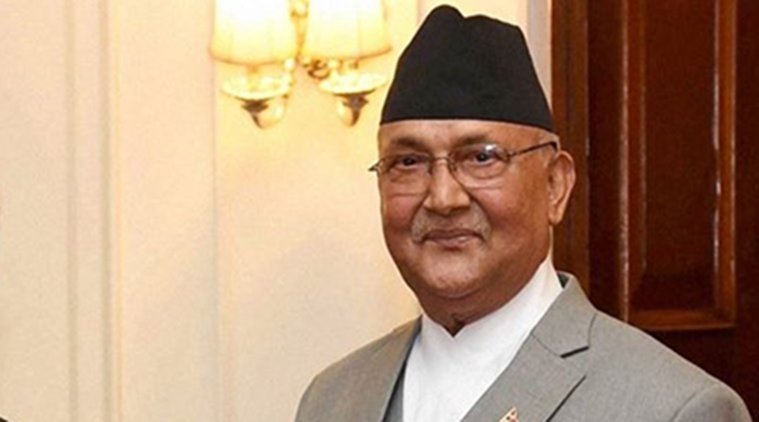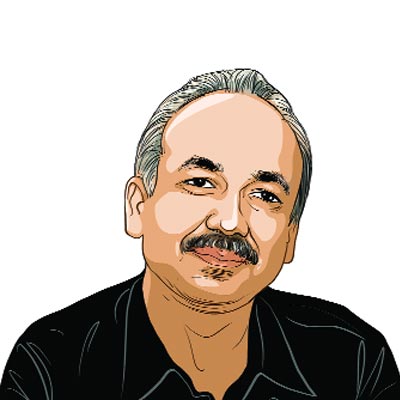Opinion Next Door Nepal: The more things change
A new government in Nepal does not hold out any promise of greater stability.
 Prime Minister of Nepal KP Sharma Oli
Prime Minister of Nepal KP Sharma Oli  Prime Minister of Nepal KP Sharma Oli. PTI Photo
Prime Minister of Nepal KP Sharma Oli. PTI Photo
Nepal’s confusing and fragmented politics took a new, but not entirely unanticipated, turn last week when the Maoists, the second largest constituent in the K. P. Oli-led coalition government, withdrew support and tabled a no-trust motion in the parliament. Oli, who also heads the Communist Party of Nepal-Unified Marxist Leninist, has clearly lost the majority, but wants a test on the floor of the house on July 21.
Oli’s preference for a trial of strength is largely born out of the hope that the constitution, that came into force in September 2015, is ambiguous about succession, even when the government loses a vote of confidence. Chances of Oli continuing in the post till elections to the parliament are held are high. Oli is banking on the constitution’s silence on succession. However, whatever he does — whether he sticks to his post or quits in deference to the majority decision in the house — will only contribute to anarchy. Meanwhile, the walkout by the Maoists has terminated the Left alliance that many thought would sweep the elections.
Quite a few equations are possible, many of them rife with contradictions, as nothing holds Nepalese political parties together more than the lust for power and the benefits associated with it. Pushpa Kamal Dahal, the head of the Communist Party of Nepal (Maoist-Centre), has staked his claim for the prime minister’s post. He is backed by the Nepali Congress, the largest party in the house. The Maoist chief has asked Oli to not take any policy decision as “his status has been reduced to that of a caretaker prime minister”. But Nepal has quite a few bad precedents of caretaker governments holding onto office for long. The international community, including Nepal’s neighbours, India and China, has endorsed past aberrations without any reservation.
Nepal elected its first Constituent Assembly in April 2008, but G.P. Koirala, the prime minister during the time of elections, continued to occupy office till mid-August. Madhav Nepal continued as “caretaker” PM for eight months, while Baburam Bhattarai held charge in that capacity for nine months.
The parties concerned have never owned responsibility for things going wrong. The change of government is unlikely to improve matters. Last month, the Maoists and the Nepali Congress were lodging human rights violation cases against each other. The Maoists blame Sher Bahadur Deuba, the Nepali Congress leader for instigating the murder of their cadres. How long will the alliance of two parties, long at loggerheads, hold? The two parties have entered into a deal, according to which the Nepali Congress will get at least 14 ministries, while nine ministries including the PM’s post will go to the Maoists.
Much will now depend on President Bidhya Devi Bhandari who belonged to the Communist Party of Nepal (UML) before becoming the head of the state when the constitution came into force. She will have to write to the speaker of the house to initiate the process for electing the new PM. For that she may have to invoke special provisions, given the Constitution’s silence on the issue of succession. Bhandari may draw the opposition’s ire, if she asks Oli to continue as a caretaker PM.
Will Nepal’s Supreme Court show enough courage if it is asked to mediate in case of such an anomaly? In the past, the court has either vacillated or given contradictory verdicts when asked to mediate on constitutional issues. When Nepal’s first elected parliament under the 1991 constitution was dissolved by then PM G.P. Koirala, after the motion of thanks to the king was defeated, the bench headed by the then Chief Justice Vishwanath Upadhyay upheld the dissolution as a “valid and constitutional exercise”. Upadhyay termed Koirala’s act as an exercise of the PM’s prerogative. However, the same chief justice declared the dissolution of Nepal’s second parliament by PM Man Mohan Adhikari as unconstitutional and revived the house on the grounds that Adhikari was wrong in appropriating the right of parliament that was considering a no-trust motion.
Contradictory judicial verdicts and constitutional anomalies are big impediments in Nepal’s much-trumpeted journey to democracy. So are unprincipled political parties. For now, it seems that Nepal’s Constitution that came into force last year will die an unsung and quiet death. Soon, there will be demands for either a new constitution or the restoration of the 1991 constitution. The debate on the matter is likely to be heavily polarised.




